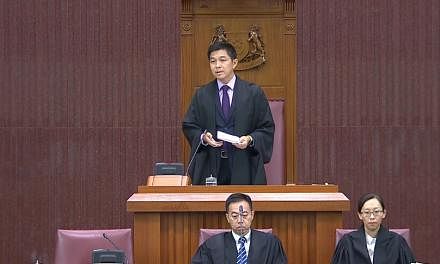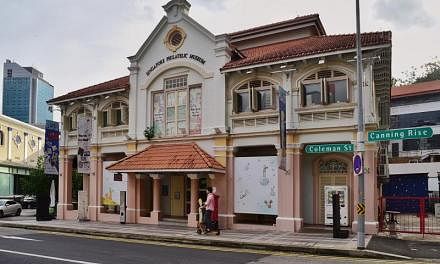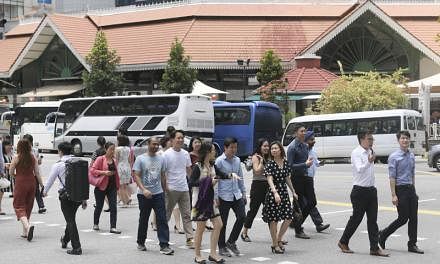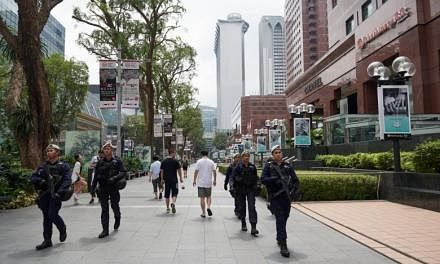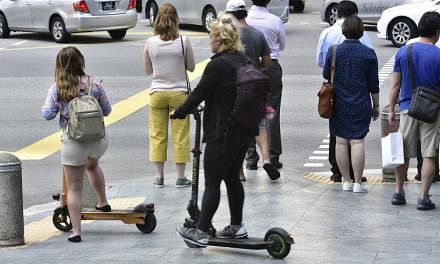SINGAPORE - Singapore has one of the most conservative fiscal accounting systems worldwide. The "primary balance" here subtracts total government spending (operating and development) from operating revenue alone.
Land sales generate substantial annual proceeds, but are not counted as government revenue in Singapore - while they are a vital source of revenue for Hong Kong. (The International Monetary Fund would count land sales and other investment income from GIC/Monetary Authority of Singapore/Temasek, etc, and subtract interest expenses, to arrive at a primary balance).
Even on that conservative basis, Singapore's finance ministers routinely underestimate fiscal outcomes.
The primary balance for financial year 2018 (April 2018 to March 2019) was estimated (at Budget time a year ago) to be a deficit of $7.34 billion, but has now been revised to a deficit of $5.32 billion. In the first three quarters of FY2018 (April to December 2018), there was a primary surplus of $4.6 billion.
While the final quarter of the fiscal year (January to March) is seasonally the weakest, a deficit of $9.92 billion for this period is unlikely. The actual outcome for FY2018 will likely be a much smaller deficit. In FY2017, the primary surplus was estimated (at Budget time a year ago, with 40 days left in the fiscal year) to be $1.24 billion - but actually turned out to be $2.26 billion.
Since income taxes are paid in arrears in Singapore, those revenues for FY2019 will be strong after another year of good economic growth (3.2 per cent real gross domestic product growth) in 2018. Finance Minister Heng Swee Keat's conservative estimate is that the primary and basic balances will be almost unchanged in FY2019.
We can assume that those deficits will be $2 billion to $3 billion smaller.
But the FY2019 Budget is still expansionary, as it provides for an overall deficit of $3.485 billion - versus an overall surplus of $2.116 billion in FY2018 (and larger overall surpluses in the previous two years). For the past 11 years, the Government has used a Net Investment Returns Contribution (NIRC), mainly to fund top-ups to endowment and trust funds. Adding NIRC to the basic balance, and subtracting the top-ups, gives the overall balance.
This year's Budget provided a large $6.1 billion Merdeka Generation Fund, to help half a million Singaporeans born between 1950 and 1959 to bolster their health and disability insurance coverage, with lower-income earners receiving additional help. Singapore is thus giving back to the next cohort of the makers of modern Singapore - having previously honoured the Pioneer Generation.
There is also a modest $1.1 billion Bicentennial Bonus, including $300 goods and services tax vouchers for 1.4 million Singaporeans, and a 50 per cent income tax rebate (albeit capped at just $200) - both focused on benefiting middle- and low-income earners. But the bulk of incentives for businesses and small and medium-sized enterprises are aimed at further boosting productivity and skills enhancement (including reskilling for the automation-based Fourth Industrial Revolution).
Over the past two years, Singapore's economic growth has been driven mainly by productivity growth, with net employment declining in 2017 (as the intake of foreign workers steadily shrivelled since 2012), and rising a modest 1.3 per cent in 2018. Government statisticians have shown that the number of hours worked by the average Singapore worker have also declined, implying that productivity per hour worked looks more impressive than the headline productivity number (measuring value-added per worker).
Singaporeans are working smarter as well as harder.
The tax system is thus being tweaked to further reduce the reliance on foreign workers of all skill levels.
Incentives for those Not Ordinarily Resident (NOR) in Singapore - introduced in 2002 to attract executives with regional and global responsibilities - will end by next year. And the services sector's dependency ratio ceiling (DRC, the maximum ratio of foreign to local workers) will be lowered from 40 per cent currently to 38 per cent at the start of next year and 35 per cent at the beginning of 2021.
Ample prudence over the decades has ensured that Singapore has, for the past quarter-century, consistently sustained one of the largest current account surpluses (as a percentage of GDP) of any economy other than the crude-oil exporting ones. Over the past 25 years, Singapore's current account surplus (the gap between exports and imports of goods and services) has consistently been above 10 per cent of GDP, and averaged about 17 per cent of GDP annually.
The current account surplus for 2018 was still a hefty 18 per cent of GDP, helped by another buoyant year for the global economy. With the electronics cycle turning downward over the past half year (as evident also in the past two months' slumping exports), this year's global backdrop is less propitious.
Real GDP growth is likely to decelerate to slightly below 3 per cent in 2019, with risks to the downside.
If those downside risks do transpire, however, Mr Heng will be better-positioned than any of his stressed counterparts globally to provide a genuine counter-cyclical stimulus.
In the meanwhile, the 12-year project to address inequality and the challenges of ageing have taken an additional step forward in this year's Budget - while also keeping an eagle eye on keeping Singapore competitive, productive and a beacon of economic leadership in globalising Asia.
The writer is an independent economist and author of Asia Reborn, a history of modern Asia.

